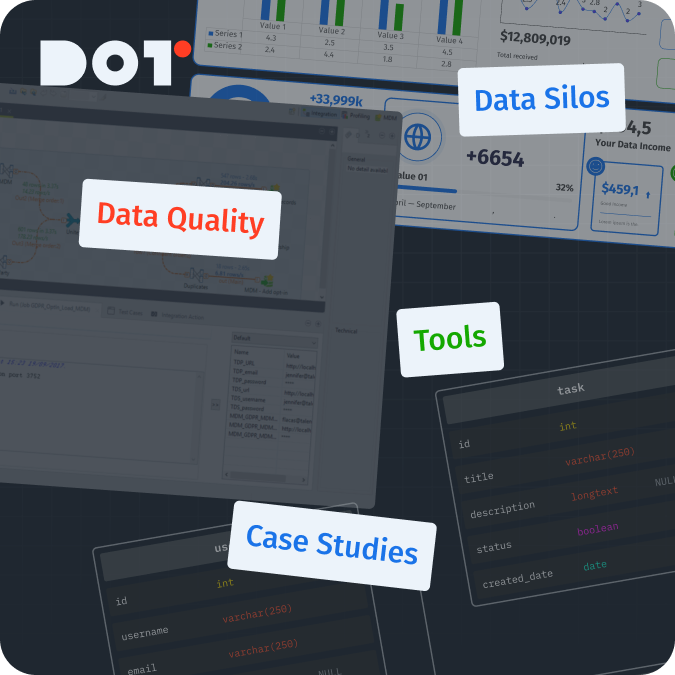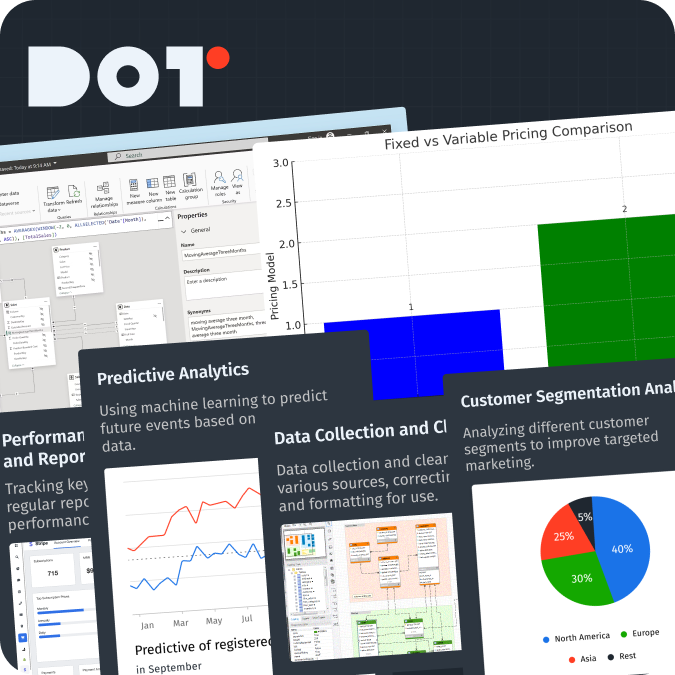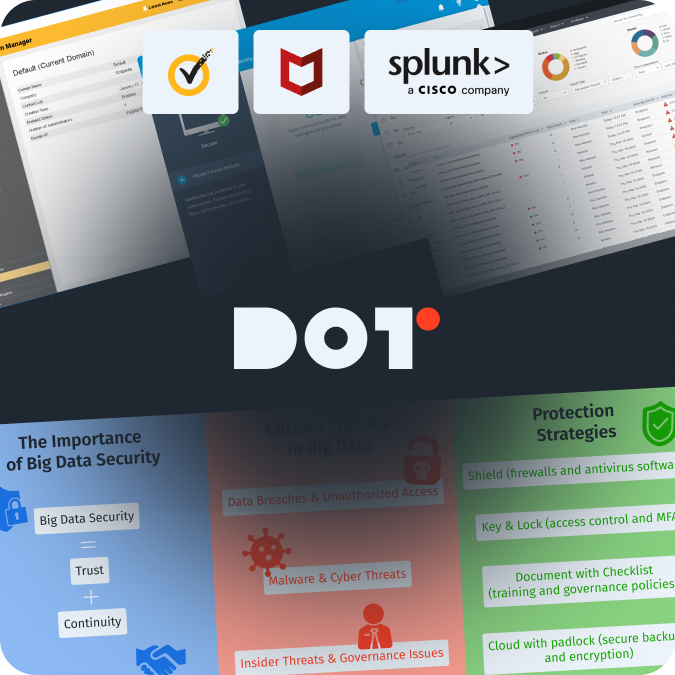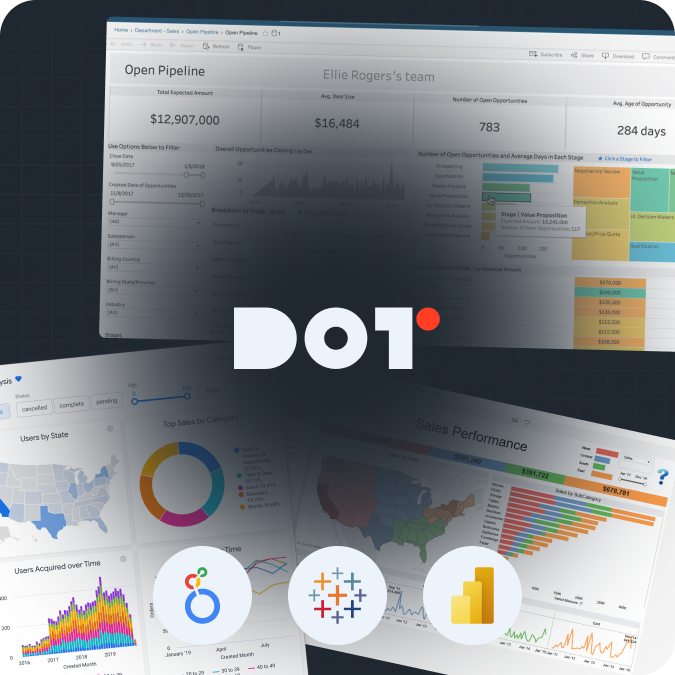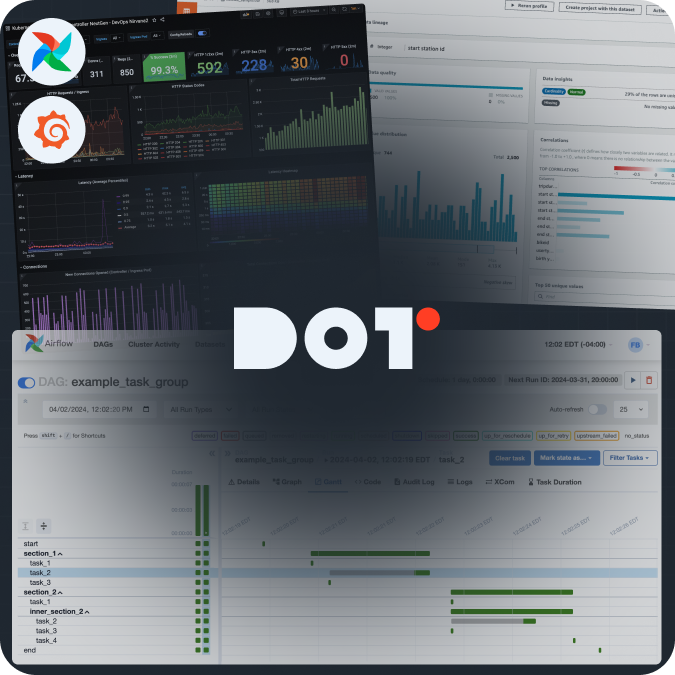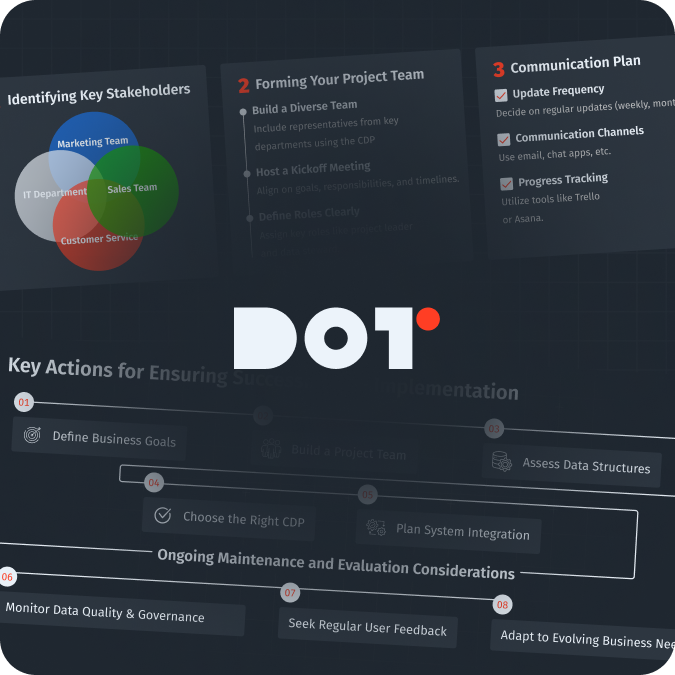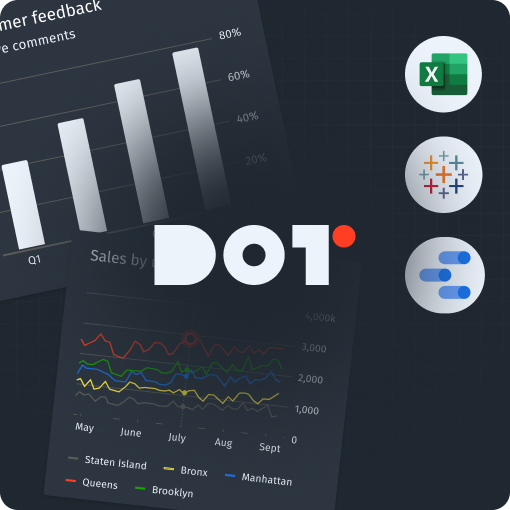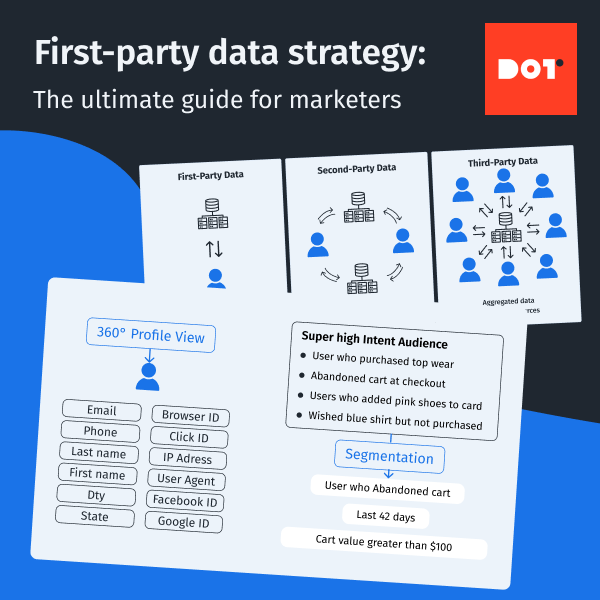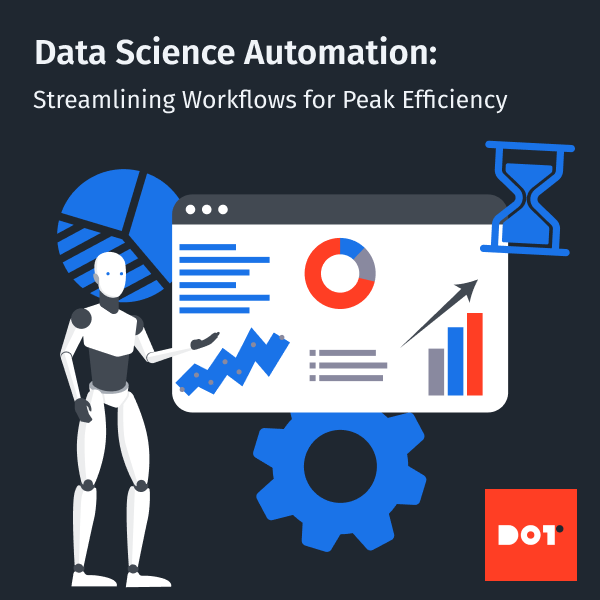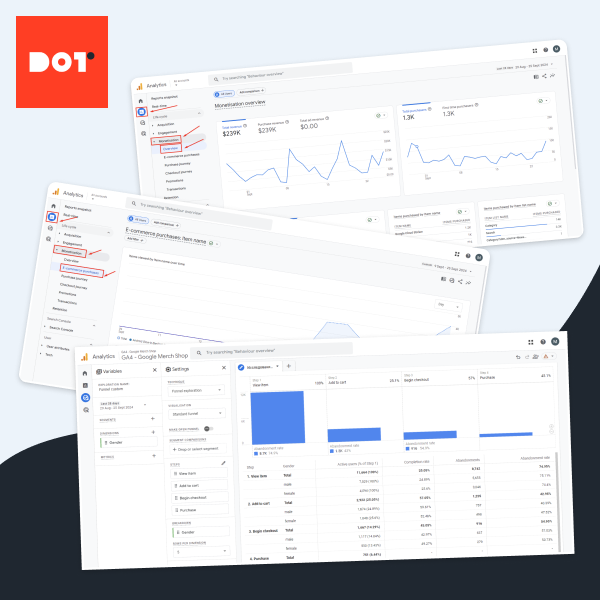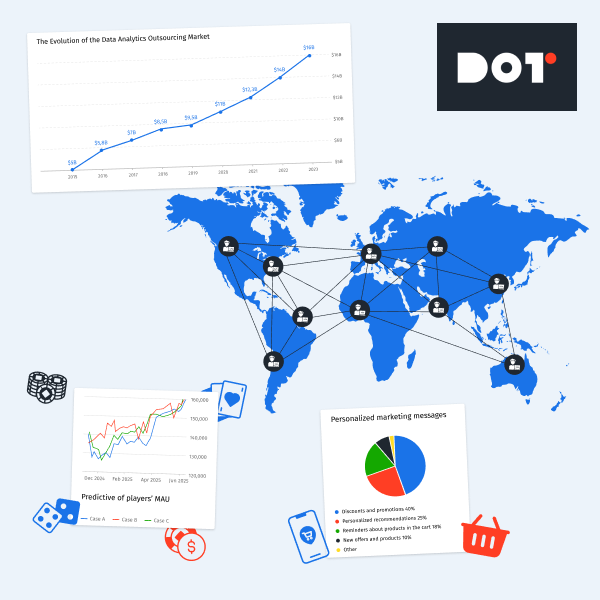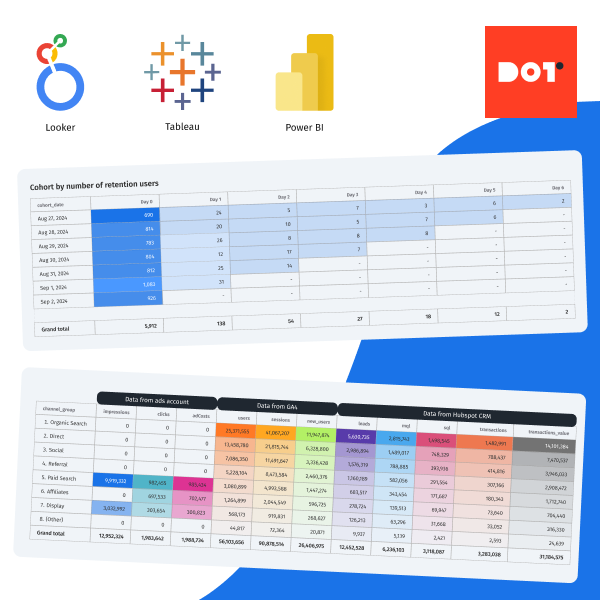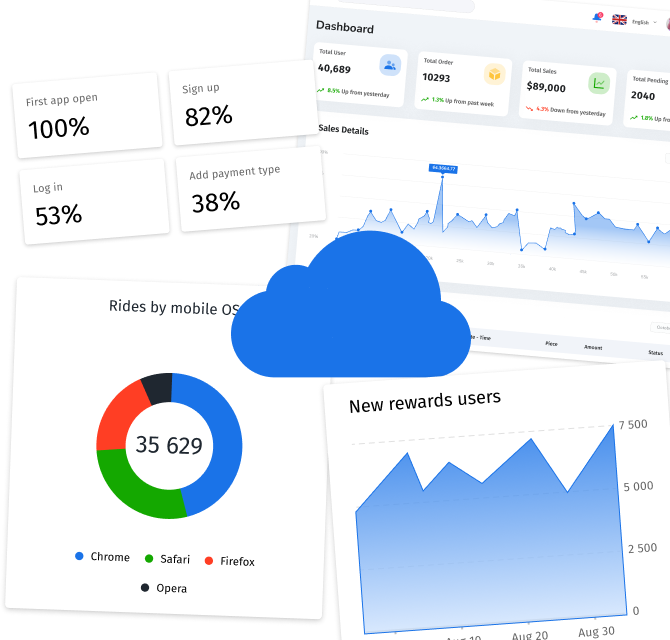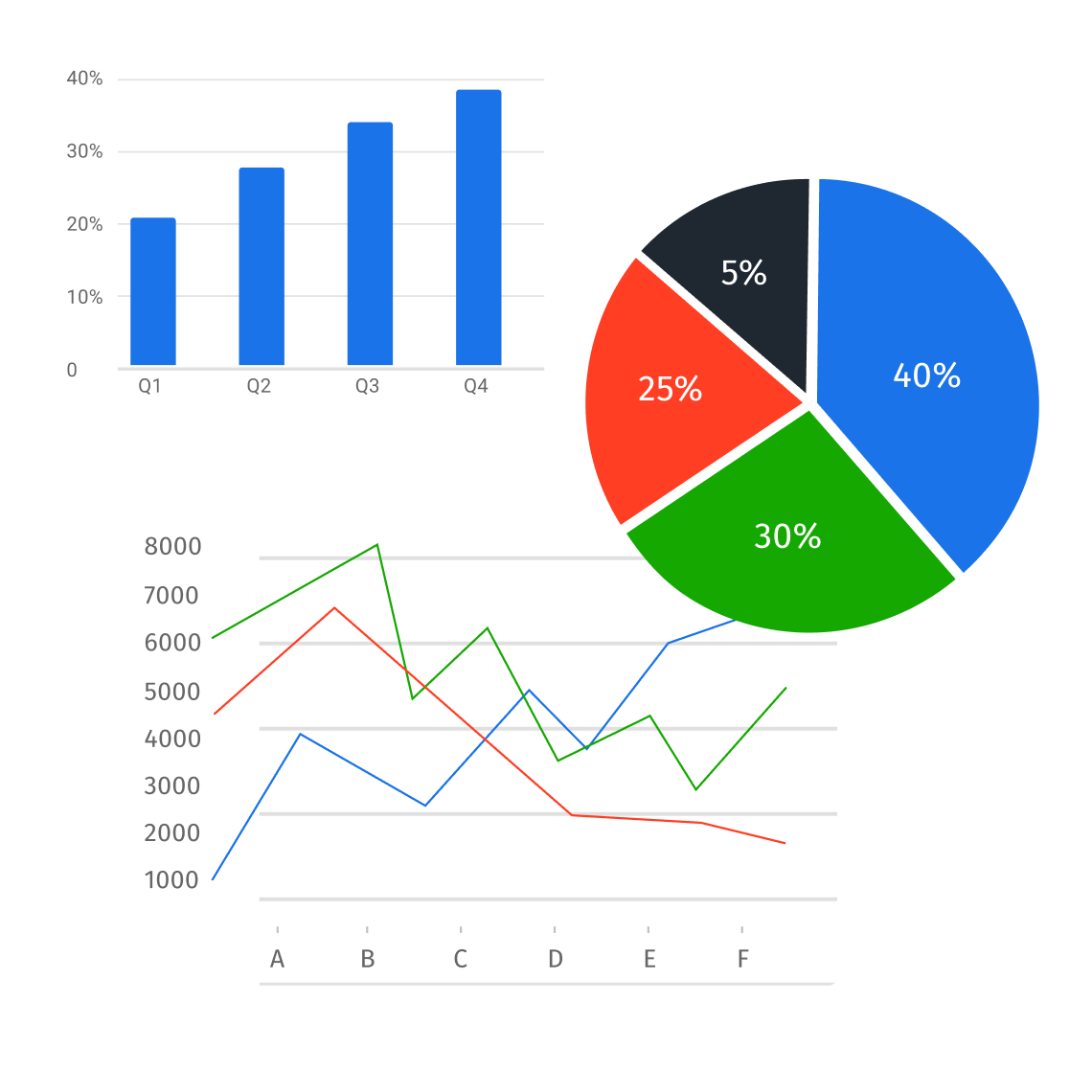Introduction
Data analytics challenges are significant for businesses today. It helps organizations make good decisions based on information from data. But, there are many challenges that can make data analytics difficult, such as problems with data quality, integration, and the skills of the team. In this article, we will look closely at these challenges and share practical ways for businesses to solve them. This way, they can unlock the full potential of their analytics and get great results. Addressing these data analysis obstacles will further enhance decision-making processes.
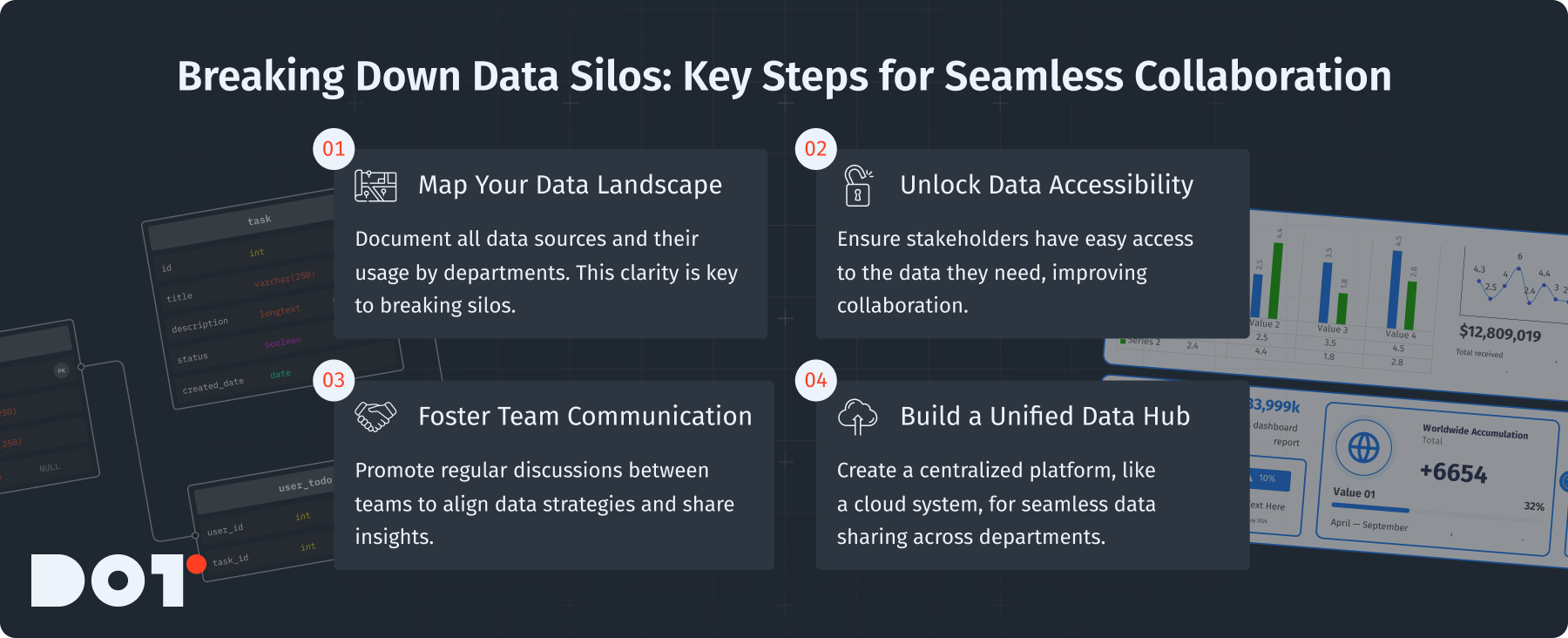
Common Data Analytics Challenges
Recognizing Data Silos
Data silos happen when information is stuck in different departments, systems, or locations. This makes it hard to share data and can cause problems with reports that different departments create. This confusion can affect stakeholders who need reliable data to make decisions. Understanding the data analytics challenges related to data silos is crucial for organizations. By recognizing analytics implementation issues, organizations can better align their data strategies.
To tackle data silos, here are some steps to take:
- Conduct an Inventory of Data Sources: List all the places where your data is stored, like databases and spreadsheets. Find out which departments use these data stores and how easily they can access them.
- Assess Accessibility: Check who can access these data sources. Talk to stakeholders to see if they find it easy to get the data they need. If access is limited, think about making it easier to use the data. When people can retrieve data easily, teamwork can improve.
- Promote Cross-Departmental Communication: Hold regular meetings where data users from different departments get together. They can share their findings and needs, leading to better collaboration. Open communication on overcoming data analytics challenges can drive collective problem-solving.
- Create a Centralized Data Repository: Consider getting a system where departments can upload and share data easily. Cloud solutions are a good choice for sharing data.
Comprehending Data Completeness and Accuracy
Data needs to be complete and accurate for good analytics. If data is missing or wrong, it can lead to poor business decisions. It is important to recognize this issue to keep your analytics trustworthy. Addressing data analytics challenges in data completeness will enhance overall analysis outcomes. Additionally, organizations must be aware of challenges in data interpretation as they work to improve data accuracy.
To maintain data accuracy, follow these steps:
- Implement Data Validation Processes: Make rules to check data when collecting it. For example, when entering sales data, make sure important fields aren’t left blank. Automated checks can help prevent mistakes.
- Conduct Regular Data Audits: Schedule checks where you analyze data from each source for completeness and accuracy. Have a team compare samples against verified records to find any errors.
- Use Data Profiling Techniques: Use data profiling to see how your data looks right now. This includes checking for missing data and ensuring data quality. Tools like Data Ladder or Talend can give you insights into the health of your data.
- Create a Feedback Loop: Get input from data users about the quality of the data they use. This can help you find problems and keep data quality high. Solving data analytics challenges requires a systematic approach to gathering user feedback.
Bridging the Skills Gap in Data Analytics Teams
Sometimes, data teams do not have the right training to handle complex analytics tasks. This skills gap can cause delays, mistakes, and limit the potential of data. The presence of data analytics challenges in team skillsets needs to be addressed. Furthermore, addressing analytics skill gaps is essential for maximizing the effectiveness of data initiatives.
To close the skills gap, try these steps:
- Conduct a Skills Assessment: Make a list of the skills you need for your analytics projects. Compare your team members against this list to find any gaps in areas like statistical analysis or programming.
- Tailor Training Programs: After identifying skill gaps, create training programs to help your team. You might want to consider workshops, online courses, or boot camps focused on data science.
- Promote Knowledge Sharing: Encourage team members to learn from each other. You can do this through lunch-and-learn meetings or seminars where members present their skills and projects.
- Foster Continuous Education: The data world is always changing. Urge team members to continue their education and get certifications. Offering incentives can motivate your analytics team to stay current. Recognizing data analytics challenges will lead to tailored educational efforts.
Identifying and Overcoming Data Quality Issues
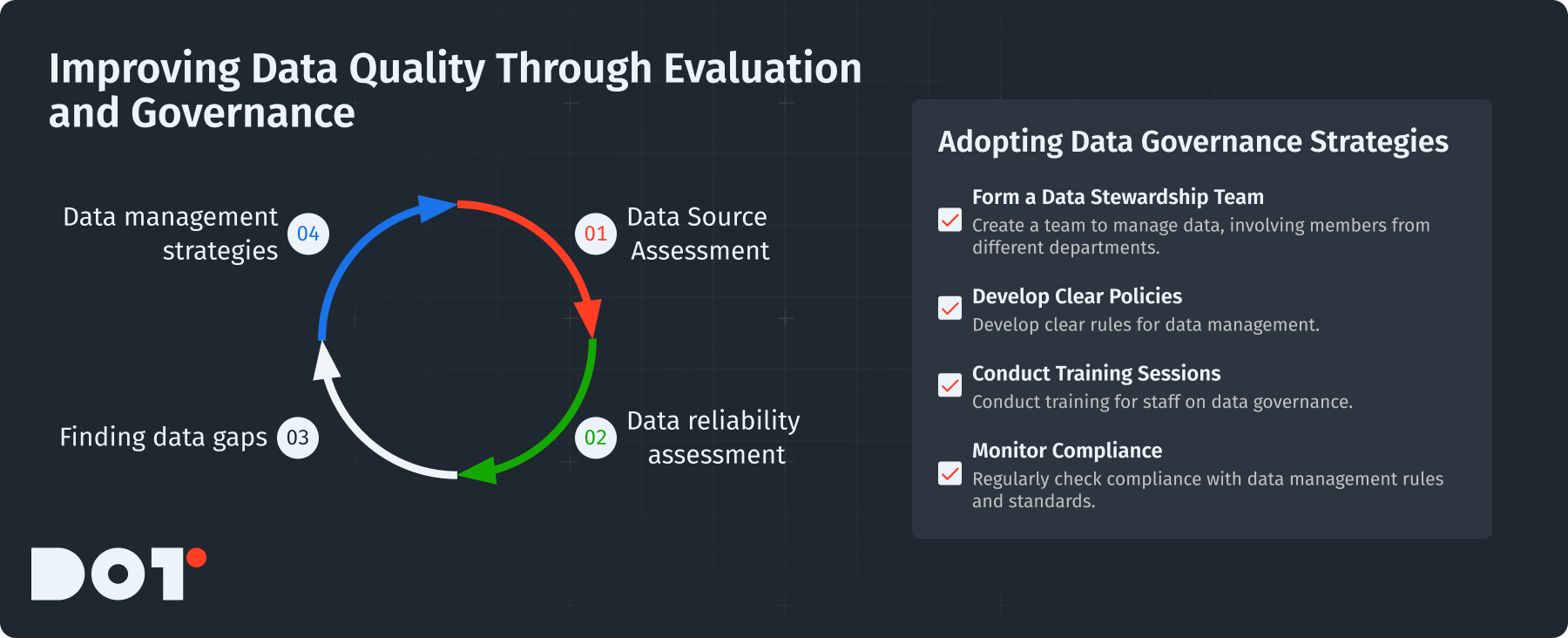
Evaluating Current Data Sources
To improve data quality, you need to understand where your data comes from. Here’s how to do it:
- Document Data Sources: Make a list of all your data sources. Group data by its origin, like internal systems and external public datasets.
- Assess Reliability: Check how reliable these sources are. Are they updated regularly? Do you have a plan in case of discrepancies? Identify industry standards your sources need to meet.
- Identify Gaps in Data: Look for important data that may be missing. This will help you find areas where you can add more data, either from inside your organization or external partners. Addressing data analytics challenges often starts with thorough assessment. This assessment also helps in understanding any existing data quality issues.
Adopting Data Governance Strategies
Data governance is key for maintaining quality and integrity.
- Form a Data Stewardship Team: Create a team that looks after data governance. Include representatives from different departments to cover various data needs.
- Develop Clear Policies: Write down structured data governance rules. Make clear which data is important, who is in charge of it, and how it should be managed.
- Conduct Training Sessions: Teach all staff about data governance policies. Providing regular updates on these can ensure everyone knows the importance of data stewardship.
- Monitor Compliance: Regularly check if data handling aligns with established rules. This can be done through formal audits or feedback surveys to understand how employees view governance practices.
Utilizing Data Quality Tools
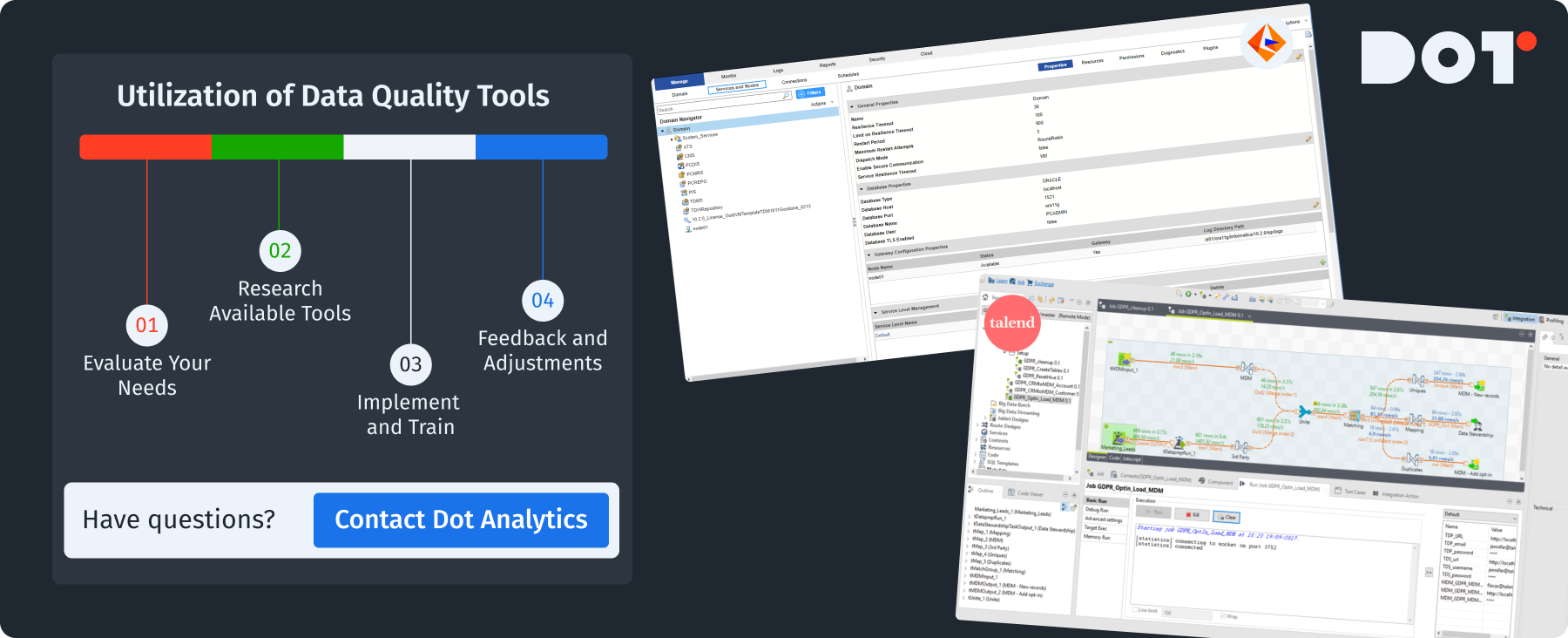
Using data quality tools can greatly enhance your data.
- Evaluate Your Needs: Identify the capabilities you need from a data quality tool. This could be profiling, cleansing, or validation features.
- Research Available Tools: Look into tools like Talend for integration, Informatica for validation, or Oracle’s Data Quality tool for managing data.
- Implement and Train: After picking a tool, roll it out properly with help from the vendor. Train your team on how to use it effectively.
- Feedback and Adjustments: After implementation, ask your team for feedback on the new tool. Small changes based on their input can lead to big improvements. Recognizing data analytics challenges through tool implementation will foster better results. Continuous assessment of tool performance can identify scalability of analytics solutions as well.
Have questions? Connect with a Dot Analytics expert for a free consultation and get answers.
Enhancing Data Integration Processes
Standardizing Data Formats and Protocols
Creating standard formats for data helps reduce confusion and improve efficiency. Here’s how to standardize:
- Create Standard Operating Procedures (SOPs): Write SOPs that outline formats and protocols for data entry, tagging, and documentation. Make sure everyone can access these documents.
- Define Naming Conventions: Set clear naming rules for databases and data fields for consistency. Having a standard naming system can help collaboration across departments.
- Train Employees on Standards: Organize training workshops to show the importance of these standards. Use real-life examples to show how following protocols improves analytics.
Employing ETL Tools for Seamless Integration
ETL (Extract, Transform, Load) tools help smooth out the data integration process.
- Assess Integration Needs: Figure out which data sources need to be combined. Identify how often data updates happen and the complexity of the data types.
- Choose the Right ETL Tool: Look into tools like Apache NiFi, Talend, or Microsoft SQL Server Integration Services based on your needs.
- Set Up the ETL Process: Create a clear plan for your ETL process to show how data will be moved, transformed, and stored.
- Regularly Review the ETL Processes: After setting up, keep an eye on how well the ETL process works and make necessary changes. Schedule regular check-ins to review performance. Addressing the data analytics challenges in integration is vital for ongoing efficiency. Ensuring smooth ETL processes can significantly mitigate data quality issues.
Guaranteeing Continuous Data Flow
Having a steady flow of data is critical for quick analytics.
- Implement Real-Time Streaming Solutions: Use platforms like Apache Kafka or Amazon Kinesis for real-time data. Think about your needs for speed, scalability, and accuracy.
- Develop Responsive Data Pipelines: Create pipelines that can handle lots of incoming data quickly. Use automation to alert you if data flow is interrupted.
- Monitor Performance: Use tools to keep track of how data flows and set up a way to report incidents for quick fixes.
Recommended Tools for Analytics Barriers
Data Visualization Tools for Insight Generation
Data visualization tools can change raw data into useful insights.
- Choose the Right Tool: Pick from popular options like Tableau or Power BI based on ease of use and capabilities. See which fits your needs better.
- Train Users: Provide training about best practices for visualizing data. Workshops on creating dashboards can help your team communicate insights better. Learning to effectively use visualization tools can help tackle data analytics challenges, including challenges in data interpretation.
- Iterate on Visuals: After making visualizations, get feedback from users. Find out which visuals work well and adjust them based on this input.
Business Intelligence Solutions for Enhanced Decision-Making
Business intelligence (BI) tools help with data analysis to give valuable insights.
- Select Appropriate BI Tools: Look into tools like Looker or Qlik for their data aggregation and reporting capabilities. See how well they can mesh with your current systems.
- Train and Support Users: Help users learn how to use these BI tools, especially for report creation and understanding data.
- Engage Users in Reporting Cycles: Involve key stakeholders in creating BI reports. This will ensure their needs and insights are included, leading to more meaningful data outputs. Finding solutions to data analytics challenges through BI can drive better decision-making and mitigate data privacy concerns.
Data Cleaning and Preparation Tools
Cleaning and preparing data is key to trustworthy analytics.
- Identify Data Prep Needs: Look at the common data quality issues in your organization, like duplicates or format variances.
- Research Data Cleaning Tools: Check tools like OpenRefine or Trifacta for their efficiency in standardizing and cleaning datasets.
- Establish Cleaning Protocols: Write down cleaning procedures and ensure everyone follows them. Regular training will help maintain compliance.
Want to see how this applies to your business? Schedule a free 20-minute consultation with one of our experts.
Fostering a Data-Driven Culture
Promoting Data Literacy Throughout the Organization
Boosting data literacy ensures all employees understand the role of data in their work.
- Implement Training Programs: Organize sessions that teach basic data analytics to every employee. Use examples relevant to their roles to keep them engaged.
- Distribute Educational Materials: Create user-friendly materials summarizing data concepts and share success stories from past analytics efforts.
- Leverage E-Learning Platforms: Incorporate e-learning modules to let employees learn at their own pace. Resources like LinkedIn Learning have many courses on analytics.
Creating Cross-Departmental Data Collaboration
Working together across departments improves data use and insights.
- Establish Analytics Task Forces: Form analytics teams with members from various departments. This way, different inputs and knowledge can help tackle analytics challenges.
- Schedule Joint Workshops: Hold workshops to focus on analytics issues where team members from different areas come together. Encourage discussions to spark collaboration.
- Promote Team Projects: Create projects needing input from multiple departments. For example, analyze customer data across marketing, sales, and service for better insights. Collaborating effectively can alleviate data analytics challenges, including data analysis obstacles.
Highlighting the Significance of Data-Driven Decisions
Showcasing the benefits of data-driven decisions can boost their importance.
- Communicate Success Stories: Consistently share case studies that show how data-driven choices led to better results. Highlight the data used and the outcomes.
- Incentivize Data-Driven Mindset: Create programs that recognize teams achieving significant data-driven successes. This supports a data-focused approach.
- Encourage Continual Evaluation: Encourage teams to regularly assess their decisions against outcomes, reinforcing the analytics approach.
Essential Skills for Analytics Teams
Technical Skills Necessary for Data Analysis
Analytics teams need a range of technical skills to work well:
- Statistical Analysis Expertise: Team members should be skilled in statistical methods and tools, including regression analysis and hypothesis testing. Courses on Coursera or edX can help.
- Data Manipulation Languages: Ensure your team is proficient in languages like SQL, R, or Python. Offering training can improve these skills.
- Data Visualization Tools: Equip the team to use tools like Tableau, Power BI, or Google Data Studio to effectively share analysis results.
Interpersonal Skills for Effective Communication and Collaboration
Soft skills are also crucial for good teamwork in analytics.
- Develop Communication Skills: Provide workshops focused on improving communication skills, especially on how to explain complex findings to non-technical stakeholders.
- Encourage Active Collaboration: Promote collaborations through team-building activities. Use feedback sessions to create a more open environment.
- Facilitate Cross-Functional Interactions: Encourage analysts to collaborate with different departments to understand their analytics needs better. This boosts communication and teamwork.
Commitment to Continuous Learning and Adaptability in Data Analytics
The analytics field is always changing; therefore, ongoing learning is essential.
- Encourage Professional Development: Support attendance at industry conferences, workshops, and training.
- Incorporate Learning Goals: Include learning objectives in annual performance reviews. This creates accountability on education.
- Create Fostering Feedback Environments: Allow team members to share lessons learned from projects, encouraging growth together. Addressing data analytics challenges requires a commitment to adaptability and learning.
Impact of Structure on Analytics Effectiveness
Understanding Hierarchical vs. Flat Structures
The structure of an organization greatly impacts its analytics effectiveness.
- Analyze Strengths and Weaknesses: Consider if your organization works better with a traditional hierarchy or a flat structure. Look at how each structure affects analytics decisions.
- Evaluate Role Clarity: In a hierarchy, make roles clear. In flat structures, promote open communication to reduce confusion about duties.
- Empower Responsiveness: If using a flat structure, ensure decisions can still be made quickly while keeping accountability clear. Understanding data analytics challenges in structures can lead to better workflows.
Aligning Analytics Teams with Business Goals
Aligning analytics work with business goals makes sure it adds value.
- Outline Business Objectives: Regularly review the organization’s strategic goals and ensure analytics teams understand them to make relevant projects.
- Integrate Analytics Reviews with Business Strategy: Hold regular meetings between business leaders and analytics teams. Discuss how analytics outcomes relate to business goals.
- Incorporate Feedback from Business Leaders: Get feedback from executives on analytics work to ensure it remains useful and aligned. Tackling data analytics challenges means ensuring understanding between teams and leadership.
Encouraging Agile Methodologies in Data Analytics Initiatives
Using agile methods allows for a flexible approach in analytics.
- Incorporate Scrum Framework: Utilize the Scrum method for short production cycles. Train teams on concepts like sprints and retrospectives.
- Establish Prioritizations: Clearly prioritize tasks that relate to business goals for focus and agility. Review priorities often to keep them relevant.
- Integrate Continuous Feedback: Build a feedback loop to ask team members and stakeholders about analytics results for continuous improvement.
Data Analytics Challenges in Case Studies
Case Study: Galleri5 – Tackling Data Integration Challenges in Marketing
Company Overview:
Galleri5 connects brands with influencers for marketing campaigns.
Challenge:
They faced the challenge of uniting data from many marketing channels to evaluate performance effectively. Data from different platforms was scattered.
What They Did:
Galleri5 created a central data warehouse that combined data from various sources, such as social media and web analytics.
How They Did It:
The team standardized file formats and used ETL tools to combine marketing data. They also trained marketing staff to better understand and use this data.
Team Composition:
The project team included data analysts, marketing experts, and IT support for a well-rounded approach.
Project Duration:
The implementation took around three months.
Technologies Used:
They used Google Cloud Platform for storing data, Tableau for visualization, and Talend for ETL.
Results:
By successfully integrating their data, they improved campaign performance analysis speed by 50% and saw a 20% rise in ROI from informed decisions. This project illustrated how addressing data analytics challenges could yield significant Return on Investment (ROI) improvements.
Case Study: CLINARIS – Ensuring Data Quality for Infection Control
Company Overview:
CLINARIS provides software solutions for managing infection data in healthcare.
Challenge:
Their services were affected by inconsistent data quality, which lowered their credibility in providing reliable infection statistics.
What They Did:
CLINARIS established strong data governance and stewardship practices to enhance data quality.
How They Did It:
They regularly checked data from healthcare facilities and used data quality tools for cleaning and validation. They also provided training for healthcare analysts on data standards.
Team Composition:
The project team was made up of data scientists, healthcare analysts, and data stewards overseeing data governance.
Project Duration:
The initiative took six months to achieve good outcomes.
Technologies Used:
They utilized SAS for analytics, Microsoft Power BI for visualization, and custom-built data quality tools.
Results:
Data accuracy improved from 70% to 95%, improving infection management and reporting across partner hospitals. This achievement underscores the importance of tackling data analytics challenges comprehensively.
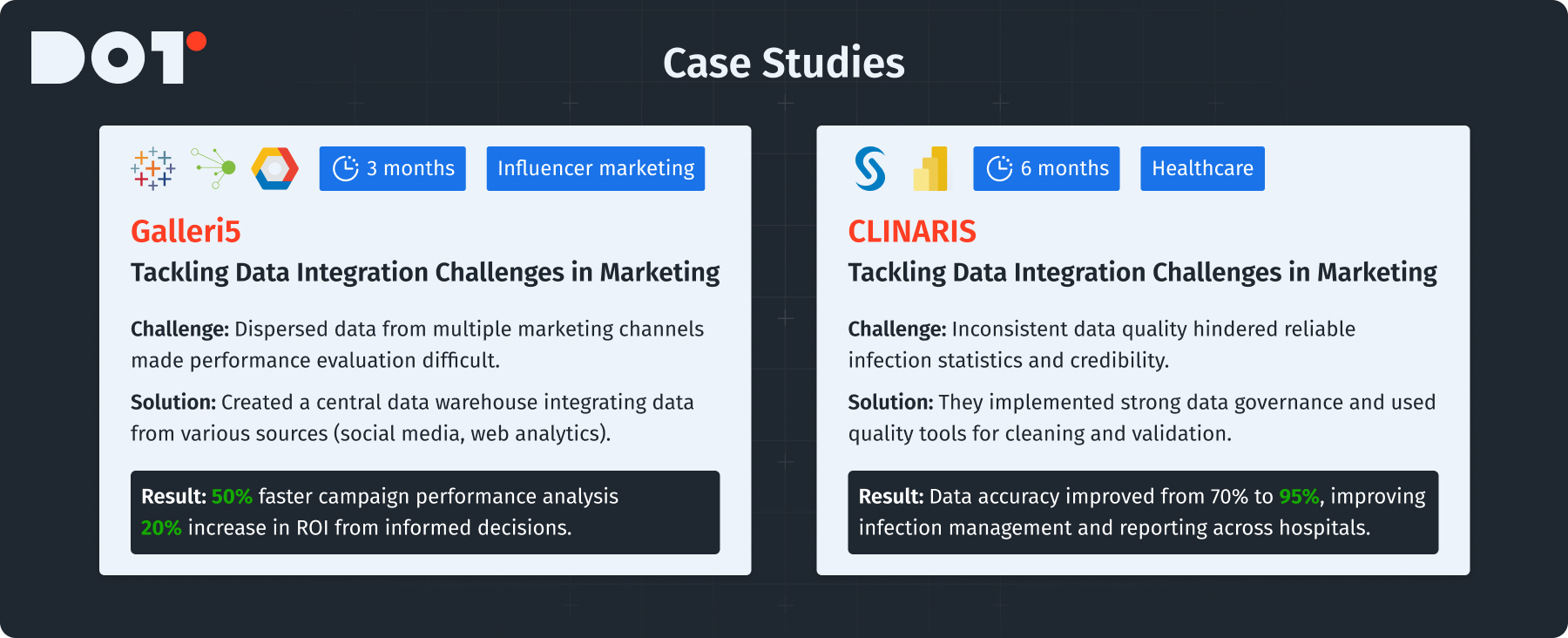
Checklist for Overcoming Data Analytics Challenges
Identify Key Data Challenges
- Review your data landscape to find major challenges and document their impacts. Considering data privacy concerns is vital during this review.
Evaluate and Select Suitable Tools
- Research and choose the best tools for your organization’s needs. Train staff to use them effectively.
Encourage a Supportive Data Culture
- Create an environment that values data-based decision-making at all levels. Share successes and emphasize the importance of analytics.
New Trends in Data Analytics
Importance of AI and Machine Learning in Analytics
AI and machine learning are getting more important for predictive analytics.
- Assess AI Capabilities: Learn about AI options available. Invest in machine learning tools that work well with your existing analytics.
- Leverage Data for Predictions: Use machine learning to analyze past data and make future predictions. This lets your analytics team focus more on insights rather than just processing data.
- Training for AI Applications: Offer training that helps your team use AI properly. This could cover machine learning basics and picking the right models.
Future of Data Privacy and Governance
With regulations like GDPR in place, data privacy is very important.
- Regular Compliance Audits: Regularly check your organization’s adherence to data regulations. Perform audits to ensure compliance and find possible weaknesses.
- Establish Data Privacy Policies: Create clear policies for how data is handled and stored to keep it secure.
- Invest in Governance Tools: Look for tools that support data governance, keeping them compliant while also utilizing analytics.
Summary
Recap of Common Challenges
Organizations need to identify and address issues like data silos, data quality inconsistencies, and skills gaps for more effective analytics.
Key Strategies for Enhanced Performance
By using strong data governance, thoughtfully integrating tools, and fostering a supportive data culture, analytics effectiveness can significantly improve.
The Importance of Organizational Support
Management at all levels must focus on analytics for lasting improvements in processes and decision-making.
Do you fully understand the topic? If not, you can book a free 15-minute consultation with an expert from Dot Analytics to address any lingering questions about your analytics strategy.
